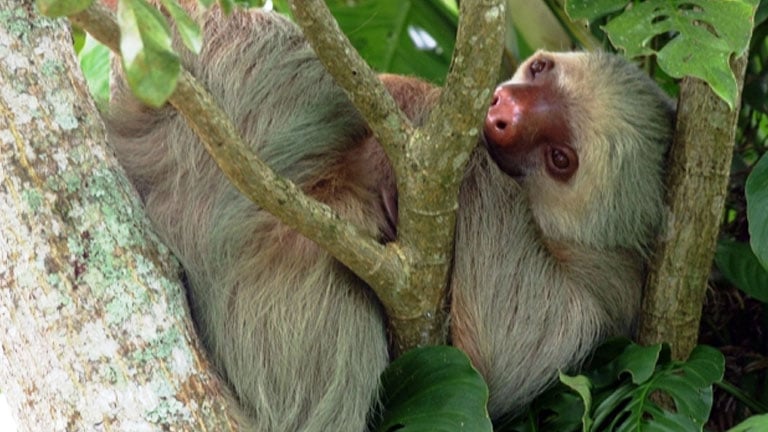Puerto Jimenez, Osa Peninsula
Where to see sloths in Costa Rica? At Playa Nicuesa Rainforest Lodge in southern Costa Rica. Article by Shannon Farley Want to know where to see a sloth in Costa Rica? Playa Nicuesa Rainforest Lodge in the southern coastal rainforest is a perfect spot with plenty of wild spaces around. The sustainable ecolodge has a 165-acre protected private rainforest reserve, and is located next to the large Piedras Blancas National Park and close to the Corcovado National Park and Golfito Wildlife Refuge. Sloths in the rainforest are sometimes easy to see since they don’t move very fast; but at other times very difficult to spot thanks to their excellent camouflage in the trees where they live. At Nicuesa Lodge, you can see both species of tropical rainforest sloths in Costa Rica â€" the Three-fingered sloth (Bradypus variegatus) and the Two-fingered sloth (Choloepus hoffmanni). Staff naturalist guides lead walks on the lodge’s rainforest trails and in the Piedras Blancas National Park to see wildlife and rainforest plants and trees.


Costa Rica has two types of sloths. This Hoffmann's Two-fingered sloth (Choloepus hoffmanni) is one of them. 5 Fun Facts about Tropical Rainforest Sloths
- Sloths are arboreal animals native to Central and South America, so they spend most of their time living high in the jungle tree canopy. They are vegetarians and eat mostly buds, tender shoots and leaves, flowers and fruit.
- Sloths hang from the trees effortlessly, using their up to four-inch-long claws to hold onto tree branches. Their claws function like hooks, and they don't require any muscle power to stay suspended from the branches.
- There are two types of sloths in Costa Rica (there are six species alive on the planet). The Three-fingered Brown-throated sloth (Bradypus variegatus) is the most well-known with its dark gray-brown face, white forehead, dark raccoon-like bands on its eyes, and seemingly blissful expression. The Hoffmanns Two-fingered sloth (Choloepus hoffmanni) is larger and is champagne to dark brown in color with a light brown or blond face and brown eye rings. Its hairless, muzzle-like snout is longer and wider than the Three-fingered sloth, and it doesn't have a visible small tail like its cousin. Sloth mothers care for their babies for about a year after birth.

- Sloths are known for moving slowly. They move through the tree canopy at a rate of about 40 yards (36.6 m) per day. They also sleep about 15 hours a day due to their exceptionally low metabolic rate. Sloths are so sedentary that green algae grow on their shaggy fur, which helps camouflage them in the trees. Their two layers of fur also host a variety of symbiotic fungi, beetles and other insects.
- Although slow in the trees and moving on the ground, sloths are actually excellent swimmers. They use their long arms to “doggie paddle†in the water at a rate three times faster than they move on land.
Digital Presence Powered by Milestone Inc.
GET IMMERSED IN NATURE!Valid on Bookings to Visit until December 15th, 2023
TripAdvisor Travelers' Choice Award 2015 - 2023




